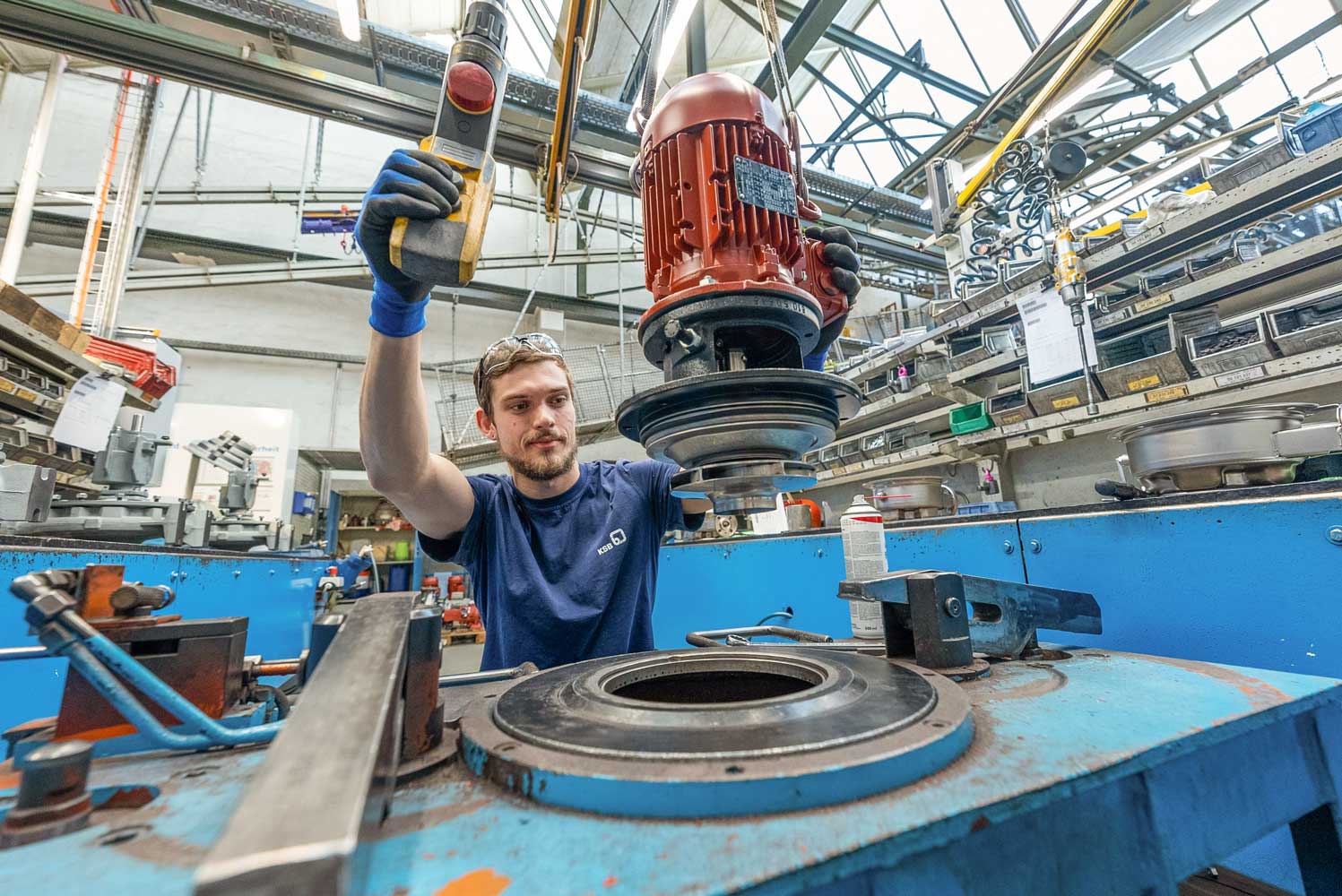FUTUR: Mr. Moos, KSB has the reputation that no two pumps are the same. How do you manage the wide range of variants for different applications, e.g. in the building, industrial, water or energy industries?
Moos:
KSB’s holy grail is configuration and complexity management. Our product catalog contains around 360,000 variants that can be ordered via our web store. We can currently generate 2.5 times 1047 variants in our configurators. Even in the case of the most standardized of our pumps, we have a repetition rate of 1.8, which is immense. The fact that we can offer so many variants presents us with a variety of challenges, ranging from procurement of parts to documentation. And it only works if the business processes behind it are set up properly. That’s where our central global process management comes in.
FUTUR: So how have you set up your business processes?
Moos:
We provide the methods and tools in my team. We use MO²GO, a model-based process assistant developed by Fraunhofer IPK, as well as a process mining software from Celonis. We also have so-called global process owners who define the framework for all processes and the process architecture. For standard products in our web store, the sales process is always the same: there is a customer inquiry, a quote is created, the order is produced, delivered and paid for.
For large industrial pumps, things become much more complex, because here we have an additional stakeholder management. We have to coordinate technical and commercial requirements, and consider geopolitical conditions as well. To do this, we have global process owners who keep an eye on different markets, products and business types and set up a framework that takes country-specific regulations and market conditions into account. Below this level, local process owners manage or shape the requirements at a local level, for example where there are different local laws and regulations. In addition, we have established our lean management team. These levels must all interact operationally. The idea we implement at KSB is this: We provide a central process tool as an architecture, in our case MO2GO, and use it to create uniformly harmonized processes and standard tools from top to bottom as far as is necessary. If more details are needed, we use procedures and guidelines to further specify them internally.
 Fraunhofer Institute for Production Systems and Design Technology
Fraunhofer Institute for Production Systems and Design Technology
